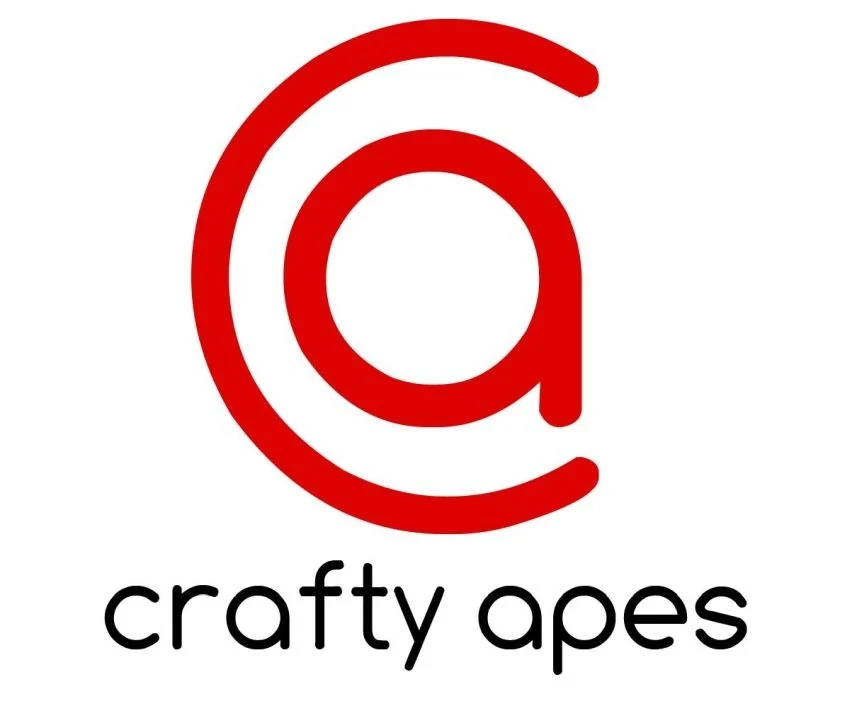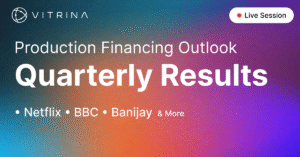Introduction
Here’s a number that keeps media leaders up at night: over 50% of independent films fail to secure distribution, often because their financing strategy was misaligned from the start. The right money, from the right partner, isn’t just about cash flow—it’s about market access, brand alignment, and downstream success.
But the world of film finance is notoriously opaque. It’s a maze of legacy relationships, fragmented data, and handshake deals. For a CXO, a Head of Content, or a producer trying to build a scalable pipeline, that’s not just inefficient—it’s a massive strategic risk.
your team can’t afford to waste a year pitching the wrong partners. In this blog, I’ll break down the modern film financing ecosystem and show you how to identify and vet the right partners for your next big project.
Curious how Vitrina can help you? Try it out today!
Trusted by global entertainment leaders to grow business, acquire high-demand content, promote projects and services, and track every Film + TV production worldwide
Table of content
- Introduction
- Key-Takeaways
- Understanding Film Finance Models: The Core Four
- The Film Financing Ecosystem: Who are the Key Players?
- Major Studios & Global Streamers: The Walled Gardens
- Top Independent Film Financiers: Agility and Specialization
- Global & Regional Financing Hubs: Beyond Hollywood
- Vetting Partners: How to Move Beyond the Pitch Deck
- Conclusion
- FAQs
Key Takeaways
| Topic | Description |
|---|---|
| Financing is More Than Money | The best partners bring distribution muscle, market access, and brand equity, not just capital. |
| The Ecosystem is Diverse | From major studios to private equity and talent agencies, the sources of capital are more varied than ever. |
| Data Trumps Gut Feel | Vetting partners requires real-time data on their current slates, past deals, and strategic priorities. |
| Global Vision is Key | Understanding regional players, tax incentives, and co-production treaties is crucial for international success. |
Understanding Film Finance Models: The Core Four
Before you can find the right company, you need to speak the language. Film financing isn’t monolithic; it’s a sophisticated tapestry of different capital types, each with its own risks and rewards. Getting this right is fundamental to your content acquisition strategy.
What are the primary types of film financing?
- Debt Financing
This is essentially a loan against the film’s future earnings or assets, like pre-sales or tax credits. It’s less risky for you (no equity given away) but requires a solid package of collateral. Think of it as the most straightforward, but also the most demanding, form of capital. Companies like banks or specialized film funds offer this, but they’ll want to see secured distribution guarantees before signing a check.
- Equity Financing
Investors provide cash in exchange for a percentage of ownership and a share of the profits. This is the lifeblood of independent film financing. Equity investors, from high-net-worth individuals to private equity film funds, are betting on your project’s success. They take the biggest risk, but they also get the biggest potential reward.
- Gap Financing
This is a specific type of debt financing that covers the “gap” between the production budget and the funds raised from senior debt and equity. It’s a crucial piece of the puzzle for many indie projects, but it comes at a higher interest rate due to the increased risk.
- Government Incentives & Tax Credits
This is “soft money” offered by governments to attract productions. From the UK film tax relief to state-level rebates in the U.S. and Canada, this can cover a significant portion of your budget. Companies often set up productions in specific locales just to leverage these powerful financial tools. International players like Special Broadcasting Service SBS in Australia often work within these frameworks to commission local content with global appeal.
The Film Financing Ecosystem: Who are the Key Players?
The landscape of capital providers is more diverse than ever. Knowing who operates in which part of the market is critical. You wouldn’t pitch a blockbuster to an indie art-house financier, so mapping the ecosystem is step one.
“Content decision-making should be data-first, not guesswork. Who you partner with determines your trajectory.”
- Major & Mini-Major Studios
These are the giants like Disney and Warner Bros. that have in-house financing and distribution. They are largely self-sufficient, greenlighting projects based on their massive global distribution needs. Their financing is deeply integrated with their marketing and release strategy.
- Independent Financiers & Production Companies
These are the agile, often specialized players that fuel the independent film world. They range from large production houses like StudioCanal, which finances and distributes, to pure-play financiers focused on specific genres or budget levels. They are the go-to for projects outside the studio system.
- Streaming Platforms
Netflix, Amazon MGM Studios, and Apple are now dominant forces, acting as studios in their own right. Their content budget and global reach are immense. They finance projects through acquisitions, commissioning originals, and co-productions, seeking content that drives subscriber growth in specific territories.
- Talent Agencies
Powerhouses like United Talent Agency (UTA) and CAA are no longer just brokers of talent. They package projects—attaching actors, directors, and writers—and take them directly to financiers, often helping to structure the financing deals themselves. Their involvement can be a powerful signal of a project’s viability.
Don't Pitch Blindly. Get Partner Intel.
Stop wasting time on financiers who don't match your strategy. Vitrina maps the deals, slates, and preferences of 140,000+ companies.

Major Studios & Global Streamers: The Walled Gardens
When it comes to sheer scale, the major studios and streamers are in a league of their own. Their financing decisions are driven by massive, vertically-integrated supply chains. They need to feed their global theatrical and streaming pipelines, making their in-house financing decisions part of a much larger corporate strategy.
How do companies like Netflix finance their content?
The Netflix content budget is legendary, but it’s not a blank check. They use a sophisticated, data-driven model to commission and acquire content. They analyze viewing data to identify genre and market gaps, then finance originals or license content to fill those needs precisely.
They engage in everything from full financing of original productions to complex co-production deals with international partners like Germany’s Beta Film to secure a steady flow of territory-specific hits.
Top Independent Film Financiers: Agility and Specialization
Outside the studio system, independent financiers are the engine room of creativity. These companies are often more accessible and willing to take risks on unique visions. They are not a monolith; they include large, integrated companies and smaller, specialized funds.
Who are the best financing companies for independent films?
The “best” depends entirely on your project. Your goal is to find alignment.
- Integrated Production & Distribution Houses
Companies like Europe’s StudioCanal or the UK’s Fremantle are powerful partners because they offer an end-to-end solution: financing, production oversight, and global sales/distribution. They invest in projects they know they can sell, making them a strategically sound choice.
- Regional Powerhouses
Don’t overlook regional leaders. Japan’s Toho is a giant in Asian cinema, while Nigeria’s Rok Studios is a key player in Nollywood financing and production. Partnering with them provides not just capital but deep market access.
- Sales Agents
International sales agents often provide crucial financing through pre-sales. They estimate a film’s value in various international territories and use those estimates to secure bank loans or provide distribution guarantees, effectively financing the film before it’s even made.
Global & Regional Financing Hubs: Beyond Hollywood
Today’s content market is unapologetically global. Smart financing strategies leverage international opportunities, from co-production treaties to lucrative regional funds. Limiting your search to Los Angeles is a rookie mistake.
Where can I find international film financing?
- European Film Funds
Europe is a hotbed of public and private funding. Countries offer national funds, and pan-European organizations provide support for co-productions. Broadcasters like Canal+ in France and public entities like BBC Studios in the UK are essential financing partners in the region, often pre-buying rights or commissioning projects directly.
- Asian Content Funds
Governments and corporations in South Korea, Japan, and Singapore are investing heavily in content to fuel the global demand for Asian stories. These funds are often looking for projects that can travel, making them excellent partners for international co-production strategies.
- Emerging Markets
Look to high-growth regions. Nollywood financing is rapidly maturing, and hubs in the Middle East and Latin America are creating new opportunities. Partnering with a respected local entity like the Nordics’ SF Studios can unlock both funding and an entire regional market.
Find Your Next Co-Production Partner
Vitrina’s platform gives you visibility into the global supply chain, helping you identify and vet financiers, distributors, and production partners in over 100 countries.

Vetting Partners: How to Move Beyond the Pitch Deck
Finding a list of companies is easy. The hard part—and the most valuable—is figuring out who is genuinely the right fit. This is where gut feel fails and data wins. You need a systematic way to answer the critical questions.
How do I find and vet the right financing partner?
You need to move from a generic search to a targeted, data-driven approach. A modern film financing database should do more than list names; it should provide actionable intelligence.
- Track Their Current Slate: What are they financing *right now*? A platform like Vitrina’s Project Tracker lets you see what projects a company has in development, production, and post. If their slate is full of sci-fi and you’re pitching a historical drama, you’re wasting everyone’s time.
- Analyze Their Deal History: Who do they partner with for distribution? What genres do they consistently acquire? Understanding their past behavior is the best predictor of their future strategy. Look for patterns in their co-production partners and sales agents.
- Verify Their Relationships: The M&E world is interconnected. A great financier has strong relationships with top-tier distributors, sales teams, and post-production houses. Vitrina’s platform helps you map these relationships, showing you the verified media partners in a company’s orbit. This is supply chain visibility, and it’s your best diligence tool.
Conclusion
Navigating the world of film financing is one of the highest-stakes challenges in the media industry. Choosing the right partner impacts everything from your budget to your global release.
The old way of relying on relationships and out-of-date lists is over. The future is about leveraging real-time, global data to find partners whose strategic goals align perfectly with your own.
What’s the first strategy you’re going to try? Let me know in the comments.Get Your Vitrina Membership Today
Frequently Asked Questions
A completion bond is a form of insurance that guarantees a film will be completed on time and on budget. It’s often a requirement for securing debt financing, as it protects investors from the risk of a chaotic or unfinished production.
A studio is typically a large, vertically integrated company that finances, produces, markets, and distributes its own films (e.g., Disney). A production company is primarily focused on the physical act of making the film. While some large production companies also finance and distribute, many must partner with studios or third-party financiers to get their projects funded and seen.
P&A (Prints & Advertising) financing covers the cost of marketing and distributing a film, which can be as expensive as the production itself. This funding is often secured later in the process and is typically provided by the distributor, who will then recoup the cost from the film’s box office revenue.
Slate financing is a deal where investors fund a portfolio (or “slate”) of a studio’s upcoming films rather than just one. This diversifies risk for the investor. If one film underperforms, a blockbuster in the same slate can cover the losses and deliver a profit.






















































